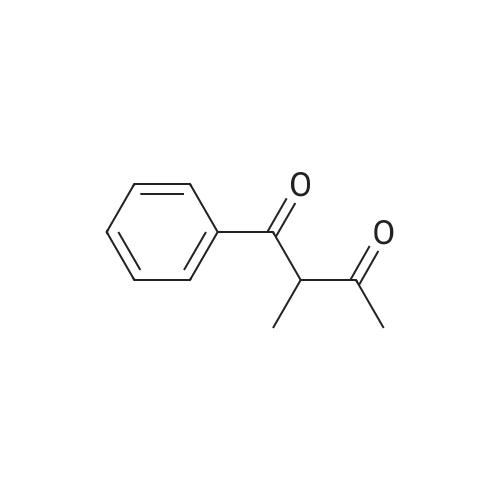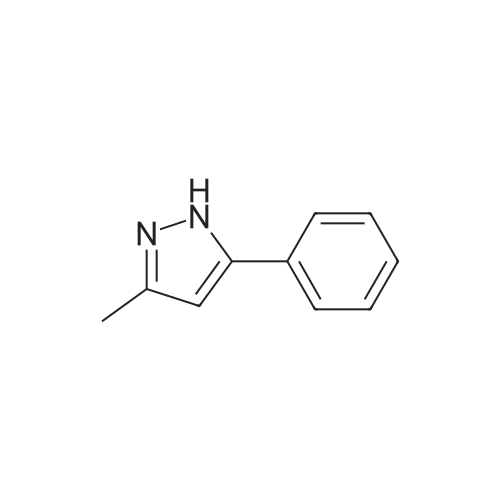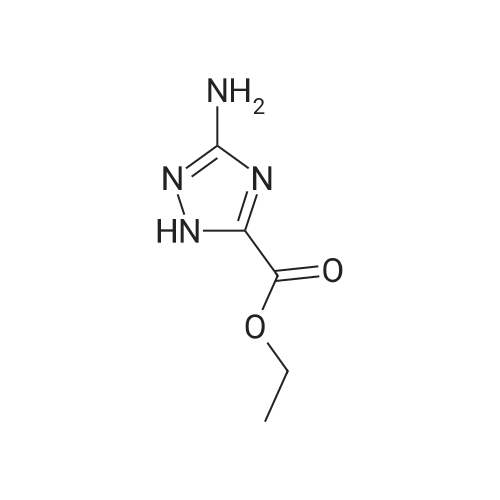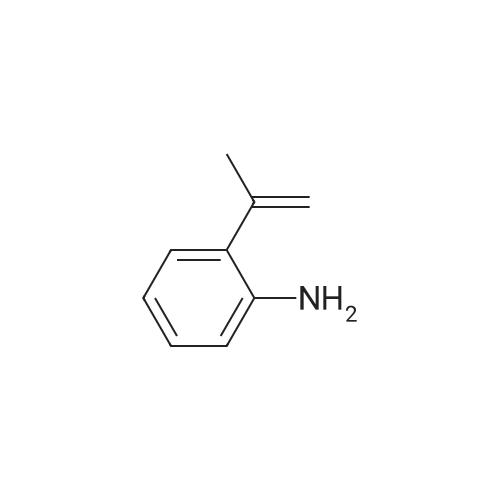| 64% |
With formic acid; In methanol; at 20℃; for 1h;UV-irradiation; Inert atmosphere; |
General procedure: Amino-styrene 2 (0.34 mmol, 1 equiv.), corresponding diketone (1.1 equiv.), and formic acid (0.01 equiv.) were dissolved in methanol in a round bottom flask. With the previous knowledge of concentration of enaminone required for the OD of 0.2 at the irradiation wavelength, the corresponding concentration of amino-styrene and 1,3-diketone was determined. At this concentration, the mixture of styrene amine 2a (1 equiv.) and 1,3 - diketone (1.1 equiv) in methanol was stirred in Pyrex test tube at room temperature for 2 h for the formation of enaminone. The completion of reaction for the enaminone formation was confirmed from crude 1H-NMR spectroscopy. The reaction mixture was dissolved in 120 mL of methanol and was transferred to 8 Pyrex test tubes and degassed with nitrogen for 15 min. It was followed by the irradiation in a Rayonet reactor with a light source of ~350 nm. Progress of the reaction was monitored by crude 1H-NMR spectroscopy of the reaction mixture. After the completion of the reaction, solvent was removed under the reduced pressure. The crude product was purified by chromatography (Combiflash) using ethyl acetate/hexanes mixture as mobile phase. For irradiation times and yields, refer to FIG.45. [00165] As noted above, FIGS.26A-26B show the NMR spectra of photoproduct 3a. Yield = 76%. 1H-NMR (500 MHz, CDCl3, δ ppm): 7.55 - 7.48 (m, 2H), 7.34 (dd, J = 7.6, 1.6 Hz, 1H), 7.30 - 7.21 (m, 3H), 7.10 (ddd, J = 8.6, 7.2, 1.6 Hz, 1H), 6.73 (td, J = 7.4, 1.1 Hz, 1H), 6.57 (dd, J = 8.0, 1.1 Hz, 1H), 5.36 (t, J = 2.7 Hz, 1H), 5.18 (d, J = 2.0 Hz, 1H), 4.20 (s, 1H), 2.18 (dd, J = 12.7, 2.9 Hz, 1H), 1.99 (dt, J = 12.7, 2.4 Hz, 1H), 1.51 (s, 3H). 13C-NMR (126 MHz, CDCl3, δ ppm): 151.4, 145.4, 135.5, 131.1, 129.6, 128.4, 128.2, 125.2, 122.1, 118.2, 115.4, 104.9, 71.4, 46.5, 35.0, 27.3. HRMS-ESI (m/z) ([M + H]+): Calculated: 264.1388; Observed: 264.1396; |Δm| = 3.0 ppm. |
| 64% |
With formic acid; In methanol; at 20℃; for 1h;UV-irradiation; Inert atmosphere; |
General procedure: Amino-styrene 2 (0.34 mmol, 1 equiv.), corresponding diketone (1.1 equiv.), and formic acid (0.01 equiv.) were dissolved in methanol in a round bottom flask. With the previous knowledge of concentration of enaminone required for the OD of 0.2 at the irradiation wavelength, the corresponding concentration of amino-styrene and 1,3-diketone was determined. At this concentration, the mixture of styrene amine 2a (1 equiv.) and 1,3 - diketone (1.1 equiv) in methanol was stirred in Pyrex test tube at room temperature for 2 h for the formation of enaminone. The completion of reaction for the enaminone formation was confirmed from crude 1H-NMR spectroscopy. The reaction mixture was dissolved in 120 mL of methanol and was transferred to 8 Pyrex test tubes and degassed with nitrogen for 15 min. It was followed by the irradiation in a Rayonet reactor with a light source of ~350 nm. Progress of the reaction was monitored by crude 1H-NMR spectroscopy of the reaction mixture. After the completion of the reaction, solvent was removed under the reduced pressure. The crude product was purified by chromatography (Combiflash) using ethyl acetate/hexanes mixture as mobile phase. For irradiation times and yields, refer to FIG.45. [00165] As noted above, FIGS.26A-26B show the NMR spectra of photoproduct 3a. Yield = 76%. 1H-NMR (500 MHz, CDCl3, δ ppm): 7.55 - 7.48 (m, 2H), 7.34 (dd, J = 7.6, 1.6 Hz, 1H), 7.30 - 7.21 (m, 3H), 7.10 (ddd, J = 8.6, 7.2, 1.6 Hz, 1H), 6.73 (td, J = 7.4, 1.1 Hz, 1H), 6.57 (dd, J = 8.0, 1.1 Hz, 1H), 5.36 (t, J = 2.7 Hz, 1H), 5.18 (d, J = 2.0 Hz, 1H), 4.20 (s, 1H), 2.18 (dd, J = 12.7, 2.9 Hz, 1H), 1.99 (dt, J = 12.7, 2.4 Hz, 1H), 1.51 (s, 3H). 13C-NMR (126 MHz, CDCl3, δ ppm): 151.4, 145.4, 135.5, 131.1, 129.6, 128.4, 128.2, 125.2, 122.1, 118.2, 115.4, 104.9, 71.4, 46.5, 35.0, 27.3. HRMS-ESI (m/z) ([M + H]+): Calculated: 264.1388; Observed: 264.1396; |Δm| = 3.0 ppm. |

 Chemistry
Chemistry
 Pharmaceutical Intermediates
Pharmaceutical Intermediates
 Inhibitors/Agonists
Inhibitors/Agonists
 Material Science
Material Science















 For Research Only
For Research Only
 120K+ Compounds
120K+ Compounds
 Competitive Price
Competitive Price
 1-2 Day Shipping
1-2 Day Shipping





















